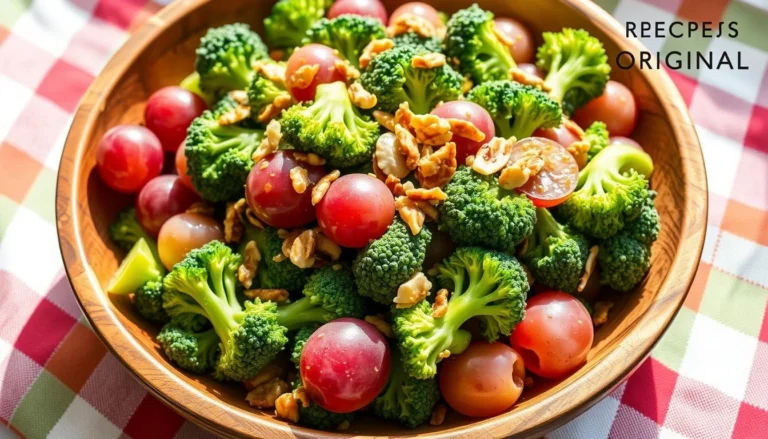ketchup original recipe: Best Recipe in 2025
Table of Contents
Do you find yourself craving that perfect ketchup flavor—something richer, more complex, and far more satisfying than the store-bought varieties lining supermarket shelves? You’re not alone. There’s something uniquely satisfying about creating your own condiments, especially one as universally beloved as ketchup.
When searching for the “original ketchup recipe,” it’s important to understand there are two interpretations: the historical original (which wasn’t tomato-based) and the classic homemade tomato ketchup that most of us envision. While this guide focuses primarily on creating the perfect classic homemade tomato ketchup recipe, we’ll also explore ketchup’s fascinating evolution to satisfy your curiosity about its true origins.
By the end of this post, you’ll have a foolproof original ketchup recipe, understand the science behind each ingredient, learn about ketchup’s surprising history, discover delicious variations, and master proper storage techniques for your homemade creation.
A Brief History: What Was the ketchup original recipe?
Contrary to what many believe, the original ketchup recipe contained no tomatoes at all! The word “ketchup” derives from the Chinese “ke-tsiap,” a fermented fish sauce dating back to the 17th century. According to food historian Andrew F. Smith, author of “Pure Ketchup: A History of America’s National Condiment,” early versions were made from fermented fish, soybeans, mushrooms, or walnuts.
When British traders encountered this savory condiment in Southeast Asia, they brought the concept home and adapted it using locally available ingredients. These early British ketchup original recipe often featured mushrooms, walnuts, oysters, or anchovies as the base—creating dark, thin, savory sauces.
The transition to tomato-based ketchup original recipe began in early 19th century America, where tomatoes were plentiful. The first published tomato ketchup recipe appeared in 1812 in James Mease’s “Archives of Useful Knowledge.” By the late 1800s, the sweet, tangy tomato version we recognize today had become standard, popularized further when Henry J. Heinz began mass-producing it in 1876.
Why Make Ketchup From Scratch?
- Superior flavor control: Adjust sweetness, acidity, and spices to create your perfect condiment
- Quality ingredients: Avoid high-fructose corn syrup and commercial preservatives
- Healthier option: Control salt and sugar content for dietary preferences
- Personal satisfaction: Experience the pride of serving something truly homemade
- Impressive gift: Homemade ketchup original recipemakes a unique, thoughtful present for food-loving friends
Understanding the Key Ingredients
Tomatoes
The foundation of any great original ketchup recipe is choosing the right tomatoes. Roma and San Marzano varieties shine here due to their meaty texture and lower water content. They deliver concentrated flavor with less cooking time.
| Tomato Option | Pros | Cons |
|---|---|---|
| Fresh Roma/San Marzano | Peak seasonal flavor, control over quality | Requires more cooking to reduce, seasonal availability |
| Canned whole tomatoes | Consistent quality, pre-peeled, year-round availability | Slightly less fresh flavor |
| Tomato paste + canned tomatoes | Speeds cooking process, intensifies flavor | Can taste more “cooked” than fresh |
Pro tip: If using fresh tomatoes, look for fully ripe specimens with deep color for maximum flavor. In winter, high-quality canned San Marzano tomatoes often outperform out-of-season fresh options.
Vinegar
The acidic component is crucial for both preservation and that distinctive tangy flavor in the original ketchup recipe. Your choice of vinegar significantly impacts the final taste:
- White distilled vinegar: Clean, sharp acidity; most similar to commercial ketchup original recipe
- Apple cider vinegar: Adds subtle fruity notes and complexity
- Red wine vinegar: Creates a more sophisticated, deeper flavor profile
- Malt vinegar: Provides an interesting, slightly yeasty undertone
The acid from vinegar not only preserves your ketchup original recipe but balances the natural sweetness of tomatoes and added sweeteners.
Sweeteners
Finding the right sweetness level is essential for authenticketchup original recipe flavor. Options include:
- White granulated sugar: Clean sweetness, dissolves easily
- Brown sugar: Adds molasses notes and deeper complexity
- Maple syrup: Contributes unique woodsy character
- Honey: Provides floral notes and natural preservation properties
The original tomato ketchup original recipefrom the 19th century tended to use plain sugar, but don’t be afraid to experiment with combinations for your perfect blend.
Spices
The spice blend is where you can truly make your original ketchup recipe shine. The classic profile includes:
- Onion and garlic: Foundation flavors that provide savory depth
- Cloves: Just a pinch adds that distinctive ketchup original recipe warmth
- Allspice: Contributes complexity with its blend of cinnamon, nutmeg, and clove notes
- Celery seed: Often overlooked but crucial for authentic flavor
- Mustard powder: Adds subtle heat and dimension
Additional spices to consider include cayenne pepper (for heat), smoked paprika (for depth), cinnamon (for warmth), or ginger (for brightness).
Salt
More than just a flavor enhancer, salt acts as a flavor amplifier that brings all other ingredients into harmony. It’s essential for proper preservation and helps bridge sweet and sour elements.
Essential Equipment
Creating the perfect homemade ketchup original recipe requires some basic kitchen tools:
- Heavy-bottomed pot (prevents scorching during long simmers)
- Immersion blender or standard blender
- Fine-mesh sieve (crucial for that smooth texture)
- Funnel
- Glass bottles or jars for storage
- Canning equipment (optional, for long-term preservation)
The Ultimate Classic Homemadeketchup original recipe
Original Ketchup Recipe: Classic Homemade Version
Author: Your Name Prep Time: 20 minutes Cook Time: 1 hour 30 minutes Total Time: 1 hour 50 minutes Yield: About 2 cups (16 ounces)
Ingredients:
- 4 pounds (about 12-14) ripe Roma tomatoes or 2 (28 oz) cans whole peeled tomatoes
- 1 medium yellow onion, roughly chopped
- 2 cloves garlic, minced
- 1/2 cup apple cider vinegar
- 1/3 cup brown sugar (packed)
- 2 tablespoons granulated sugar
- 1 1/2 teaspoons salt
- 1/4 teaspoon ground cloves
- 1/4 teaspoon allspice
- 1/2 teaspoon celery seeds
- 1/4 teaspoon mustard powder
- 1 cinnamon stick (remove before blending)
- 1/8 teaspoon cayenne pepper (optional)
Instructions:
- Prepare tomatoes: If using fresh tomatoes, cut an X on the bottom of each tomato. Blanch in boiling water for 30 seconds, then transfer to an ice bath. Peel skins, remove cores, and roughly chop. If using canned tomatoes, drain and roughly chop.
- Cook base ingredients: In a large heavy-bottomed pot, combine tomatoes, onion, and garlic. Bring to a simmer over medium heat and cook for about 20 minutes until vegetables are very soft, stirring occasionally.
- Blend mixture: Remove from heat and use an immersion blender to puree until smooth (alternatively, transfer in batches to a standard blender, being careful with the hot mixture).
- Strain the puree: Press the mixture through a fine-mesh sieve back into the pot, discarding solids. This step is crucial for achieving that smooth ketchup texture.
- Add remaining ingredients: Stir in vinegar, both sugars, salt, and all spices.
- Simmer and reduce: Bring to a gentle simmer over medium-low heat. Cook uncovered, stirring occasionally to prevent sticking, until the mixture has reduced by about half and reached your desired thickness (approximately 45-60 minutes). The ketchup should coat the back of a spoon and leave a clear path when you run your finger through it.
- Taste and adjust: Remove from heat and taste. Adjust seasonings if needed—add more sugar for sweetness, vinegar for tanginess, or salt to enhance flavors.
- Cool slightly: Allow the ketchup to cool for about 10 minutes.
- Final blend: Remove the cinnamon stick and blend once more for ultra-smoothness.
- Bottle: While still warm, transfer to sterilized glass bottles or jars using a funnel.
Nutrition Information (per tablespoon): Calories: 15, Carbohydrates: 3.5g, Sugars: 2.5g, Sodium: 75mg, Fiber: 0.5g
Pro Tips for Perfect ketchup original recipe
Achieving the Ideal Thickness
The key to perfect ketchup consistency is patience. Allow your ketchup to reduce slowly—rushing with high heat risks scorching and bitter flavors. If you’re short on time:
- Tomato paste boost: Add 2-3 tablespoons of tomato paste early in cooking to jumpstart concentration
- Cornstarch slurry: Mix 1 teaspoon cornstarch with 1 tablespoon cold water and stir into simmering ketchup (note: this changes the traditional texture slightly)
- Extended simmering: For truly authentic thickness, nothing beats a long, gentle simmer with frequent stirring
“The secret to great homemade ketchup isn’t in the ingredients—it’s in the patience required to achieve that perfect consistency.” – Chef Thomas Keller
Balancing Flavors
Professional chefs know that great ketchup requires perfect balance between sweet, sour, salty, and umami elements:
- Always taste near the end of cooking when flavors have concentrated
- Add vinegar, sugar, or salt in small increments, tasting between each addition
- Remember that flavors intensify slightly after cooling
- If ketchup tastes flat, try adding a pinch more salt rather than more spices
Texture Techniques
Commercial ketchup’s uniform smoothness comes from industrial equipment, but you can achieve similar results:
- Double-strain through progressively finer sieves
- For ultra-smooth results, blend cooled ketchup again before bottling
- Ensure all ingredients (especially onions) are fully softened before initial blending
- Consider adding 1/4 teaspoon xanthan gum during final blending for silky texture
Recipe Variations
Spicy Ketchup
Transform your original ketchup recipe into a zesty condiment by adding:
- 1-2 finely chopped jalapeños (add with onions)
- 1/2 teaspoon red pepper flakes
- 1-2 tablespoons hot sauce added after cooking
- 1/4 teaspoon cayenne pepper
Smoky Ketchup
Create depth with these additions:
- 1 tablespoon smoked paprika
- 1-2 teaspoons liquid smoke (add just before final blending)
- 2 fire-roasted red bell peppers (blend with tomato mixture)
- 1/4 teaspoon chipotle powder
Lower Sugar Version
For a healthier option:
- Reduce total sugar by half
- Substitute 2 tablespoons maple syrup for brown sugar
- Add 1/4 cup finely grated carrot for natural sweetness
- Use yellow cherry tomatoes for naturally sweeter base
Storage and Preservation
Refrigerator Storage
Your homemade original ketchup recipe will keep well in the refrigerator:
- Store in clean glass containers with tight-fitting lids
- Keeps safely for 3-4 weeks refrigerated
- The high acid content naturally preserves ketchup
- Look for separation, off odors, or mold as signs of spoilage
Water Bath Canning for Long-Term Storage
For shelf-stable ketchup that lasts up to a year:
- Sterilize mason jars and lids according to manufacturer instructions
- Fill jars with hot ketchup, leaving 1/4 inch headspace
- Remove air bubbles, wipe rims clean, and apply lids and rings
- Process in boiling water bath for 15 minutes (adjust for altitude if needed)
- Allow to cool undisturbed for 24 hours before testing seals
- Store sealed jars in a cool, dark place for up to 1 year
Safety note: Always follow USDA guidelines for safe home canning. The high acid content of ketchup makes it safe for water bath canning when properly prepared.
Troubleshooting Common Issues
My ketchup is too thin
- Continue simmering to reduce further
- Next time, use paste tomatoes or add tomato paste earlier
- Allow to cool completely—ketchup thickens as it chills
My ketchup is too thick
- Whisk in a tablespoon of water or vinegar until desired consistency
- Remember ketchup thickens when chilled
- Store in squeeze bottles for easier dispensing
My ketchup separated
- This is normal in homemade versions without commercial stabilizers
- Shake well before using
- Blend again with an immersion blender
- Add 1/4 teaspoon xanthan gum during blending to prevent separation
My ketchup tastes too sweet/sour
- For too sweet: add vinegar in 1-teaspoon increments
- For too sour: add sugar in 1-teaspoon increments
- Balance with a pinch of salt to bring flavors together
Frequently Asked Questions
What was the original ketchup recipe made from? The original ketchup recipe from the 17th century was actually a fermented fish sauce from China called “ke-tsiap” with no tomatoes. Early British versions were made with mushrooms, walnuts, or oysters. Tomato ketchup as we know it today emerged in early 19th century America.
Is homemade ketchup better than store-bought? Homemade ketchup offers superior flavor customization, avoids commercial preservatives and high-fructose corn syrup, and can be adjusted for dietary preferences. Many people find the fresh tomato flavor and balanced spices worth the extra effort.
How long does homemade ketchup last? Refrigerated homemade ketchup typically stays fresh for 3-4 weeks. If properly processed using water bath canning techniques, it can be shelf-stable for up to one year before opening.
What are the best tomatoes for original ketchup recipe? Roma or San Marzano tomatoes are ideal for ketchup due to their meaty texture, low water content, and balanced sweetness. In off-seasons, high-quality canned San Marzano tomatoes often produce better results than fresh out-of-season varieties.
Can I reduce the sugar in homemade ketchup? Yes, sugar can be reduced by up to half with minimal impact on preservation. Consider adding naturally sweet vegetables like carrots or red bell peppers to maintain flavor balance while cutting added sugars.
Conclusion
Creating your own original ketchup recipe at home connects you with culinary traditions dating back centuries while producing a condiment far superior to commercial versions. The process might take a bit more time than grabbing a bottle off the shelf, but the depth of flavor and satisfaction of crafting something truly special is immeasurable.
Whether you stick with the classic recipe or explore creative variations, homemade ketchup elevates everything from burgers to fries to meatloaf. Plus, it makes an impressive homemade gift that friends and family will appreciate.
We’d love to hear how your homemade ketchup adventures turn out! Share your experiences, customizations, or questions in the comments below. And if you’re feeling inspired by this condiment creation, check out our related recipes for homemade BBQ sauce, herb-infused mayonnaise, or perfect crispy french fries—the ideal companion for your fresh ketchup!
Have you rediscovered the original ketchup recipe? What variations have you tried? Let us know in the comments!



